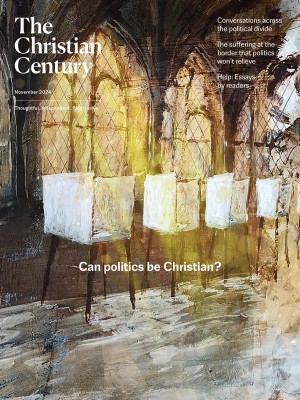Healing from the ground up
In her memoir, Lore Ferguson Wilbert draws connections between her life and the forest‘s understory.

The Understory
An Invitation to Rootedness and Resilience from the Forest Floor
In the summer of 2020, like so many other people, I took up camping and meeting with friends at state parks. Soon I was reading about the sites I was visiting—along South Carolina’s coast, in the mountains, and in the Piedmont. Then I found myself reading books that engage with the outdoors more broadly: Justin Farrell’s Billionaire Wilderness (which shows how ultra-wealthy people have made the western United States inaccessible), Clarence Jefferson Hall’s A Prison in the Woods (a critique of prisons built on publicly owned lands in New York), and The Earth Will Appear as the Garden of Eden (a collection of essays about Mormon traditions and environmental stewardship edited by Jedediah Rogers and Matthew Godfrey). I discovered that well-researched memoirs, such as Robin Wall Kimmerer’s Braiding Sweetgrass, can open windows to my academic research on the intersection of religious practices and mineral extraction.
Lore Ferguson Wilbert’s new book touches on many of these same topics: the appeal of the outdoors, the ways her experience of a beautiful region of the United States comes at a cost, the influence her family of origin has on her experience of a particular place, and how the organisms and ecosystems that exist on the forest floor shape what grows above. The setting for these reflections is the Adirondacks in northeast New York State, where Wilbert grew up and—after many, many moves—where she returned as an adult. The Understory is similar to Kimmerer’s work in that it blends together personal experience and scientific commentary.
Read our latest issue or browse back issues.
Upon first reading, Wilbert’s book feels like a disjointed collection of memories, where one paragraph is implicitly rather than explicitly linked to the next. However, the seemingly disjointed nature of the prose mimics the way human memory works: we think of things and how they relate to other things, and then sometimes we come back around to the original idea. It is typical for our minds to wander as we go on a walk or a hike, and Wilbert describes many hikes in The Understory. This circular and indirect communication pattern makes her work of discussing serious topics easy for readers to enter, like sharing insights gleaned from a conversation while hiking with longtime friends.
The fragments coalesce around the connections Wilbert draws between the understory (the forest floor) and the plants that we see as we walk or hike. The book explores two dimensions of undergrowth: Wilbert investigates the lichens, moss, and other hidden organisms that sustain the forest as she simultaneously works to come to terms with her religious background, family of origin, and community. Often the former is a metaphor for the latter. As Wilbert writes, “the moisture is, right now, helping to transform these leftovers from their former state where no one will be able to tell where fern ended and leaf began. This is nature’s mulch, and like the gardener’s brown gold, last year’s mulch is this year’s soil.”
The forest’s need for plant mixture, including some invasive species, is akin to Wilbert’s discussion of how to connect who she is now to who she was as a child (prompted by encounters that occur more frequently after she moves back to where she grew up). Some of the most poignant parts of this memoir for me are Wilbert’s discussions of this tension between her origins and her present in her relationships with other people. Even when people say that since she left her community and family of origin, she is not “in a position to address any dysfunction,” she still tries.
Wilbert discusses many interactions she and her husband have with old friends and family members that end with broken relationships. Ultimately, like trying to restore deforested areas where trees grow back easily but the undergrowth takes more time and work, “not all wounds will be healed. Not all scars will disappear. Not everything is renewable or replicable.”
And yet, as The Understory reiterates in different ways in each of its sections, Wilbert continually tries to go to the root and heal from the ground up. She speaks eloquently of the need to stop leaving well enough alone, to go beyond the drama “on top, what’s visible, the thin layer of snow covering over muddy walkways,” and instead take in situations and people for what they actually are—and to have honest conversations about the religious and political beliefs that drive our decisions.
Wilbert touches on many important aspects of day-to-day life as she recounts interactions with people she knows well, people she hardly knows, and people she has known for a long time who don’t really know her as she is now. These fragmented reflections, like the forest she so clearly loves, invite readers to join the spaces in between the thoughts and topics she addresses.
While I am not, like Wilbert, invested in conversations with the so-called other side, I am certain that honest discussions in which both parties are deeply engaged—like those she models—are a productive way forward. I am also certain that the next time I walk through one of South Carolina’s state parks, I will pay closer attention to the understory.






